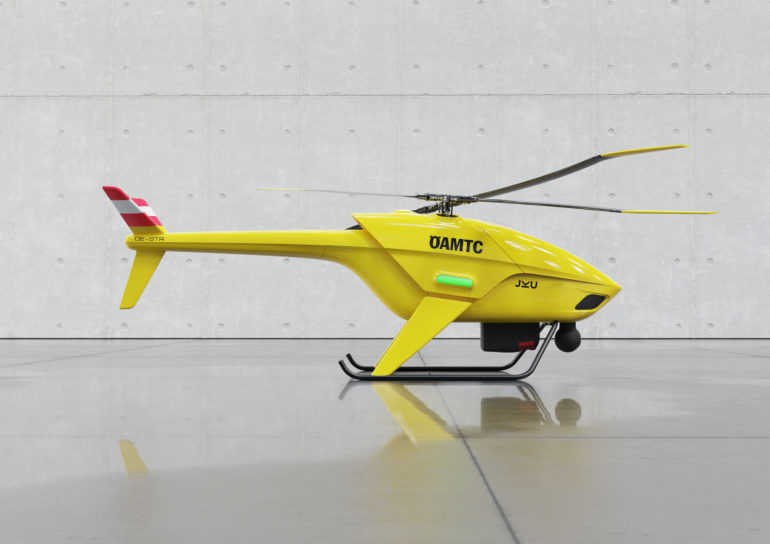A team of researchers working at Johannes Kepler University has developed an autonomous drone with a new type of technology to improve search-and-rescue efforts. In their paper published in the journal Science Robotics, the group describes their drone modifications. Andreas Birk with Jacobs University Bremen has published a Focus piece in the same journal issue outlining the work by the team in Austria.
Finding people lost (or hiding) in the forest is difficult because of the tree cover. People in planes and helicopters have difficulty seeing through the canopy to the ground below, where people might be walking or even laying down. The same problem exists for thermal applications—heat sensors cannot pick up readings adequately through the canopy. Efforts have been made to add drones to search-and-rescue operations, but they suffer from the same problems because they are remotely controlled by pilots using them to search the ground below. In this new effort, the researchers have added new technology that both helps to see through the tree canopy and to highlight people that might be under it.
The new technology is based on what the researchers describe as an airborne optical sectioning algorithm—it uses the power of a computer to defocus occluding objects such as the tops of trees. The second part of the new device uses thermal imaging to highlight the heat emitted from a warm body. A machine-learning application then determines if the heat signals are those of humans, animals or other sources. The new hardware was then affixed to a standard autonomous drone. The computer in the drone uses both locational positioning to determine where to search and cues from the AOS and thermal sensors. If a possible match is made, the drone automatically moves closer to a target to get a better look. If its sensors indicate a match, it signals the research team giving them the coordinates. In testing their newly outfitted drones over 17 field experiments, the researchers found it was able to locate 38 of 42 people hidden below tree canopies.
Using artificial intelligence to help drones find people lost in the woods
More information:
D. C. Schedl et al, An autonomous drone for search and rescue in forests using airborne optical sectioning, Science Robotics (2021). DOI: 10.1126/scirobotics.abg1188
Andreas Birk, Seeing through the forest and the trees with drones, Science Robotics (2021). DOI: 10.1126/scirobotics.abj3947
2021 Science X Network
Citation:
An autonomous drone for search and rescue in forests using optical sectioning algorithm (2021, June 25)
retrieved 25 June 2021
from https://techxplore.com/news/2021-06-autonomous-drone-forests-optical-sectioning.html
This document is subject to copyright. Apart from any fair dealing for the purpose of private study or research, no
part may be reproduced without the written permission. The content is provided for information purposes only.



